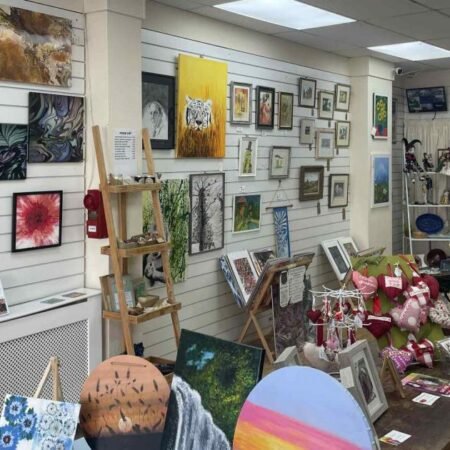If we start treating music and the creative economy as infrastructure, its potential benefits to our economic and social wellbeing are limitless.
The way the world invests in human and infrastructure development is going through a review process. This year, the World Bank Group’s International Development Association (IDA) is meeting to determine its budget for the next three years, referred to as its replenishment. This is the foundational fund offered to 77 countries to support their development with a proposed budget of USD 120 billion. These discussions, which have happened throughout the year, conclude on December 5th and 6th in Seoul, and the challenges these investments will address are immense. Only 18% of the funding requested to address crisis areas was raised globally last year. The pandemic has erased many historical gains that were reducing extreme poverty. Moreover, developing nations are facing an acute debt crisis, spending more money on servicing interest than investing in their populations as the climate crisis continues to worsen.
Therefore, how these funds are deployed and their impact on addressing these challenges are as pressing as ever. Maximising them to reduce extreme poverty and creating sustainable, non-extractive jobs is not just about replenishing the pot. It’s about broadening the scope and means of how it can be deployed. To do so, one opportunity is to explore additional asset classes that could deliver this return to both recipients and funders. One such sector that could do just that, if treated and invested in as an economy, is the creative and cultural industries. And music, with its potential to drive economic growth, is the best place to start.
TOPSHOT – Belgian pop singer Paul Van Haver, aka Stromae, performs on October 17, 2015 in Kigali. … [+]
Despite its ubiquity and low barrier to access it – either as a creator or a consumer – music has rarely been invested in as a development finance asset. This is because, in many countries where music is part of daily life, it is regarded more as a utility than an economic good. Music – whether one performs it, unwinds to it, or uses it to bring their community together – happens after a place is developed and has infrastructure rather than a core tenet of the infrastructure itself. As a result, while music is all around us, the systems and infrastructural requirements for it to provide paths to jobs, skills, and development are not. Many foundational economic requirements that music needs to function as an economy do not exist in over 50 countries, such as enforced copyright regulations, education, and the availability and access to physical infrastructure to develop industrial capacity and skills. This restricts the capacity for music and other artforms – making it, marketing it, performing it live, or earning from owning a copyrighted work – to be economic. And if there’s no infrastructure for it to be an economy, it can’t produce economic benefit.
Yet, the data shows that music is one to watch as a growing, sustainable, and lucrative development tool. The total value of recordings grew 10.2% last year to $41.5 billion, and collections (the amount of money paid to songwriters and composers) increased by 7.6% in 2023 to 13 billion euros ($14 billion). The fastest growing listener bases (and probably creators) are also in emerging markets across Africa and Latin America, which correlates with countries with majority populations under 30. However, this is under a backdrop with no backdrop. Most of the revenue generated by music in Africa leaves the continent. If development finance facilities were designed to address these infrastructural challenges, to support – locally – the creation of these foundations, music – or any other creative industry based on disseminating intellectual property – could be a robust infrastructural investment and generate development return. Instead, these foundations remain inefficient, which amplifies the risk of investing in a market where the systems for a market to exist are lacking.
There’s music everywhere. There’s culture everywhere. And as a result, there’s economic opportunity through music and culture everywhere. But this is where we stand with creative and cultural investment. We may recognize the inherent value of music—or other creative pursuits—in our lives. But we’re not capitalizing on them. We’re listening, but we’re not truly listening.
Policies, and money that comes with them, are changing. Music and the creative economy were included in the signing of the Abidjan Accord, which advocates for the G20 nations to fully fund IDA at $120bn. There are also a few examples of investment banks and global funders paying attention, such as Afreximbank’s landmark $2bn facility for the creative economy is investing heavily in film, audiovisual, and, as it develops, music. But this remains an exception, not the norm. Now is the time to change the norm.
When music is incorporated into infrastructure spending, the benefits are clear. The development of Kigali’s BK Arena, as part of a wider sport and entertainment masterplan that includes the development of a new national stadium, has established an anchor for African and international artists to visit Kigali while touring. Kendrick Lamar’s performance as part of the Move Afrika program is one example, alongside the impact the arena has had on the nation’s basketball economy and its ability to host conferences and gatherings, such as last year’s Commonwealth Heads of Government Meeting (CHOGM).
NAIROBI, KENYA – APRIL 29: (L-R Back Row) Ndidi Nwueneli, Sellah Bogonko, James Mwangi, Nir Bar Dea, … [+]
To foster sustainable development everywhere, we need to lean more toward what we all share—our creativity—and develop systems to leverage its potential value everywhere. If and when IDA is replenished, it should also come with a commitment to diversify what qualifies as development spend, and on the list should be the music, creative, and cultural industries. We must improve how we address and solve the big problems we’re facing, and there’s no better place to start than with our creativity. It’s one of the limitless resources we all have.







No Comment! Be the first one.